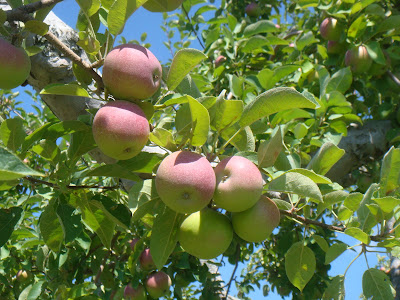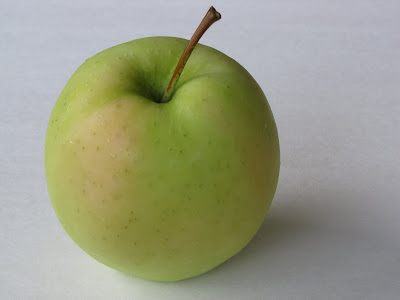
The past few days have been good for the New England apple crop. Friday night it was so cool that, for the first time in months, I had to shut all of my windows. The trend continued throughout the weekend, aided by today’s soaking rain, with high temperatures only in the 60s.
Looking ahead we see another day of rain in tomorrow’s forecast, and more moderate temperatures, with daytime highs in the 70s and 80s and overnight lows in the 50s, for the next week. It comes just in time to have a positive impact on the New England apple harvest.
Small in area as it is compared to states like California and Michigan, on any given day New England’s six states still have many weathers. Some areas of the region have had ample rain throughout the summer; some places will have missed today’s precipitation.
Even the microclimates within orchards can cause variations in the crop. Many orchards are planted on hillsides, and those trees are less vulnerable to frost than trees in low-lying areas, where there is little air movement. A 30-second hailstorm can wipe out a block of a particular variety or an entire orchard and not be felt a mile away.
Still, this rain appears to have hit most places, and should help size the crop. The cooler nights will give the apples color. The crop is still running well ahead of a typical year (you may begin to see Macs before the end of the month, rather than mid-September), but this weather, if it continues, will slow the ripening process down some, especially for the later varieties.
As a region, New England is looking at a good, flavorful crop. Between now and harvest, the apples’ colors and sugars will come to the surface, and they will develop in a wide range of sizes. For some varieties, that day is already here, and for others it is about to come!
It’s time to plan an orchard visit.
The 2010 New England fresh apple harvest will be celebrated Friday, September 10, in a daylong event around Massachusetts featuring Commissioner of Agriculture Scott Soares, Russell Powell, executive director of the New England Apple Association, and these apple orchards and apple processing facilities:
10 a.m. to 10:30 a.m. J. P. Sullivan, packing house, Ayer
11 a.m. to 11:30 a.m. Carlson Orchards, with cider-making, Harvard
1:15 p.m. to 1:45 p.m. Red Apple Farm, Phillipston
Beginning that evening through the weekend, the New England Apple Association and Massachusetts Department of Agricultural Resources will sample apples and give away recipes, brochures and other educational materials at a booth at the Sterling Fair.
The fair’s hours are Friday, 5 p.m. to 11 p.m.; Saturday’ 9 a.m. to 11 p.m.; and Sunday, 9 a.m. to 5 p.m.
Commissioner Soares and Powell will give a presentation on New England apple varieties Sunday at 11 a.m.
Learn more about our apples at www.newenglandapples.org


